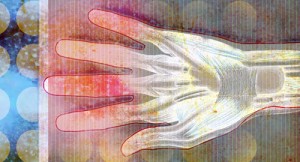 BALTIMORE—Rheumatology is a field in which all data points are considered in building the case for a patient’s diagnosis and seeking to clarify disease activity and prognosis. In recent years, information gleaned through ultrasound imaging has helped supplement the data gathered from the traditional history, physical exam, and laboratory and radiographic studies alone.
BALTIMORE—Rheumatology is a field in which all data points are considered in building the case for a patient’s diagnosis and seeking to clarify disease activity and prognosis. In recent years, information gleaned through ultrasound imaging has helped supplement the data gathered from the traditional history, physical exam, and laboratory and radiographic studies alone.
At the 17th Annual Advances in the Diagnosis and Treatment of the Rheumatic Diseases meeting at Johns Hopkins University School of Medicine, Baltimore, Dana DiRenzo, MD, MHS, RhMSUS, instructor of medicine, Johns Hopkins University School of Medicine, provided an extremely helpful overview of the use of ultrasound imaging in patients with inflammatory arthritis.
Limitations of Traditional Examinations
Dr. DiRenzo began by noting some of the limitations of the traditional clinical examination in evaluating patients for rheumatoid arthritis (RA). Disease activity scores can sometimes be artificially elevated in patients with comorbidities that increase the tender joint count even in the absence of frank joint swelling, she explained. The issue of inter-observer variance of clinical joint assessments also arises, with different clinicians having different assessments of the presence or absence of synovitis in the same joint for a specific patient. More recently, a newfound appreciation has developed for the entity of “subclinical synovitis,” which may not be easily detectable on the clinical exam.
For the definition of terms for ultrasound findings, Dr. DiRenzo referenced the Outcome Measures in Rheumatology (OMERACT) group definitions for ultrasound-detected pathologies.
Synovitis is defined as the presence of a hypoechoic synovial hypertrophy regardless of the presence of effusion or any grade of Doppler signal.
The term erosion is defined as intra- and/or extra-articular discontinuity of bone surface that is visible in two perpendicular planes.1
Other helpful terms include gray scale, which is the modality used to detect lesions of synovial effusion and hypertrophy, and power Doppler, which is the modality used to detect blood flow to the synovial membrane.2
Baseline Ultrasound Assessment
Ultrasound is used in rheumatology for diagnosis and disease monitoring. It can also assist in predicting prognosis, Dr. DiRenzo noted. With regard to diagnosis, Horton et al. evaluated 60 patients with new-onset undifferentiated arthritis who did not meet 2010 ACR/European League Against Rheumatism (EULAR) RA classification criteria.3 These patients underwent baseline ultrasound assessment and then were followed prospectively, with 22% ultimately meeting criteria for RA, and 53% (32 of the 60 patients) receiving methotrexate within 12 months after enrollment. The authors found that severity of gray scale synovitis detected across 26 joints was predictive of progression to RA and of methotrexate use, independent of the clinical swollen joint count or disease activity score.
In a study by Ziegelasch et al., 82 patients positive for anti-citrullinated protein antibodies (ACPA) but without clinical signs of arthritis were examined with baseline ultrasound for synovial hypertrophy, inflammatory activity by power Doppler and erosions in small joints of hands and feet. In this study, the authors found that clinical arthritis development was more common in patients with baseline ultrasound erosions than those without (77% vs. 42%, P=0.032).4
These studies indicate that baseline ultrasound imaging may be helpful in predicting which patients with undifferentiated arthritis, or with risk factors for RA (such as ACPA positivity) but no clinical arthritis, may be likely to progress to RA in the future.
Evaluating Disease Activity
In contrast to using ultrasound to aid in diagnosis, the evidence for using ultrasound to assist in evaluating disease activity and guiding treatment in patients with RA is less compelling. Dale et al. sought to evaluate if an intensive early RA treat-to-target strategy could be improved by using ultrasound assessment to help evaluate disease activity.5
Some 111 newly diagnosed patients with RA or undifferentiated arthritis (symptom duration of less than one year) were enrolled and then randomized to the control group, in which disease-modifying anti-rheumatic drug (DMARD) escalation was based on the Disease Activity Score-28 for rheumatoid arthritis with erythrocyte sedimentation rate (DAS28-ESR) alone, or the intervention group, in which DMARD escalation was based on a combined DAS28-ESR score and ultrasound evaluation.
The co-primary outcomes were mean change from baseline of DAS44 score and RA magnetic resonance imaging (MRI) scoring system (RAMRIS) erosion score. Although the intervention group received more intensive DMARD therapy over the course of the study, no significant between-group differences in DAS44 score or RAMRIS erosion score were seen.5
Similar findings were seen in a separate study from Scandinavia, in which the authors concluded that the systematic use of ultrasound in the follow-up of patients with early RA is not justified at present.6
Jason Liebowitz, MD, completed his fellowship in rheumatology at Johns Hopkins University, Baltimore, where he also earned his medical degree. He is currently in practice with Skylands Medical Group, N.J.
References
- Bruyn GAW, Siddle HJ, Hanova P, et al. Ultrasound of subtalar joint synovitis in patients with rheumatoid arthritis: Results of an OMERACT reliability exercise using consensual definitions. J Rheumatol. 2019 Apr;46(4):351–359.
- Kang T, Lanni S, Nam J, et al. The evolution of ultrasound in rheumatology. Ther Adv Musculoskelet Dis. 2012 Dec;4(6):399–411.
- Horton SC, Tan AL, Wakefield RJ, et al. Ultrasound-detectable grey scale synovitis predicts future fulfilment of the 2010 ACR/EULAR RA classification criteria in patients with new-onset undifferentiated arthritis. RMD Open. 2017 Mar 30;3(1):e000394.
- Ziegelasch M, Eloff E, Hammer HB, et al. Bone erosions detected by ultrasound are prognostic for clinical arthritis development in patients with ACPA and musculoskeletal pain. Front Med (Lausanne). 2021 Mar 23;8:653994.
- Dale J, Stirling A, Zhang R, et al. Targeting ultrasound remission in early rheumatoid arthritis: The results of the TaSER study, a randomised clinical trial. Ann Rheum Dis. 2016 Jun;75(6):1043–1050.
- Haavardsholm EA, Aga AB, Olsen IC, et al. Ultrasound in management of rheumatoid arthritis: ARCTIC randomised controlled strategy trial. 2016 Aug 16;354:i4205.


